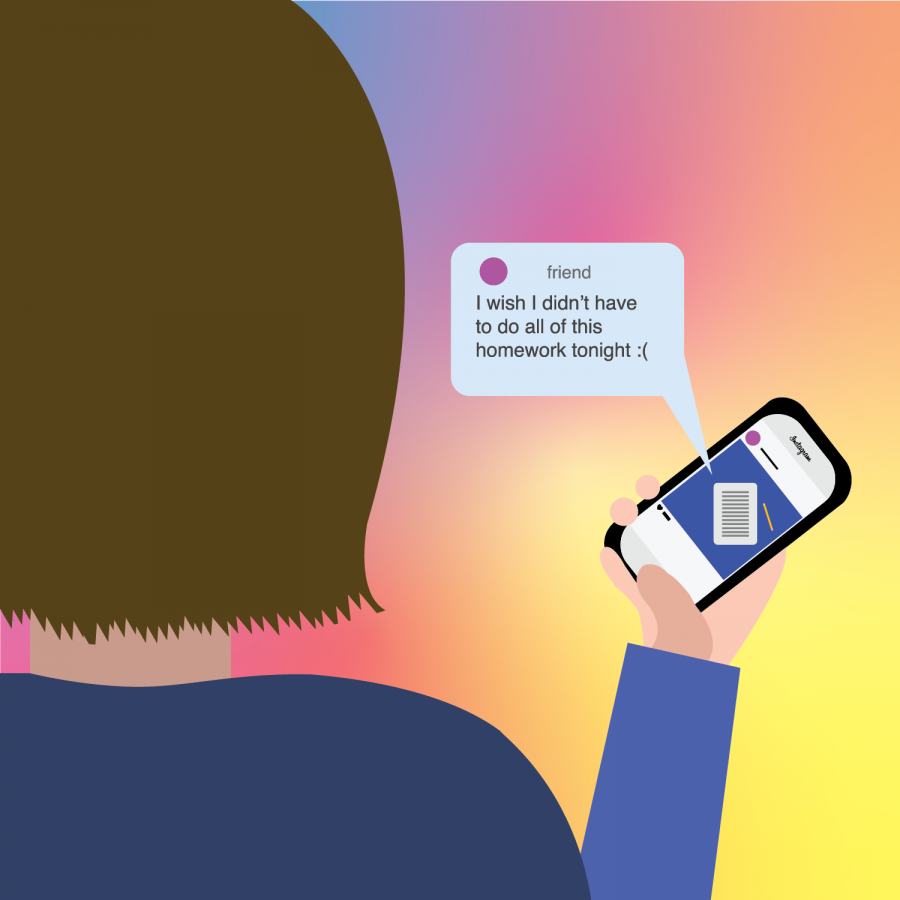Fake Instagrams offer mental support
Oct 25, 2018
The benefits and downfalls of social media is a hot-button issue, one that should be solved on a case-by-case basis, but I am certainly thankful for the free therapy sessions I receive by forcefully making a select nine people listen to my teenage-angst-fueled rants on my fake Instagram, also known as “finsta.”
My pool of followers is carefully selected, allowing me to post freely: grainy photos, unfiltered captions, no makeup on and the like. Not only that, but the people I follow create a feed free of envious feelings. There’s no anger toward the Insta-famous, stick-thin models who present an unrealistic diet of pizza and fries at midnight; no slew of sudden desires, like a radical haircut, a sixth piercing or three tattoos; no wasting time fantasizing about my dream wedding that would mimic a fairytale wedding held in the cliffside village of Positano, Italy, that’s currently trending on Instagram.
A portmanteau of “fake” and “Instagram,” the name is paradoxical in that nothing about a finsta is fake. If anything, real Instagrams, or “rinstas,” are more deserving of the title, with the carefully curated images chosen to highlight the prime moments of one’s college experience, leaving out the stressful, late nights spent in the library.
On my finsta, you’ll find my struggles, opinions and an occasional humble-brag post about achievements I would otherwise not disclose on my main account. I love telling people about my problems, but I am aware people have their own set of issues and does not need mine to add to their list.
Finstas are perfect for the 4 a.m. mental breakdown caused by an eight hour homework grind where you’re nowhere close to finishing — a situation I think many can resonate with.
Get The Daily Illini in your inbox!
Through these breakdowns, my low-key private finsta proved itself as an outlet for me to carry out my own therapy sessions. Being able to pen my thoughts freely is liberating, especially when I don’t have to worry about judgment. More importantly, my rants usually begin in frustration, but untangling my thoughts into coherent words allows me to better understand them and therefore come up with a solution.
A popular, recurring post is where I cry over the abysmally tough workload of college. I rant about how I so badly want to give up, but this is followed by an epiphany to embrace the challenge and remember why I chose this path. Complementing these raw outbursts is support from my followers, whom I trust, and for whom I’d gladly return the favor in the form of a response to their own finsta post. Even if it is just a “like,” there is value in letting someone know they are not alone in their struggle.
My finsta isn’t all dark though. Sometimes, all I want is an opinion on which sherpa-lined jacket I should buy: denim or corduroy? Nevertheless, I believe it’s normal — instinctive, even — to cry over struggles that require an outlet to address your feelings. Whether it is a seasonal slump or a more pervasive, long-standing sadness, it is important to cultivate your mental and emotional health.
Kimberly is a junior in Engineering.






